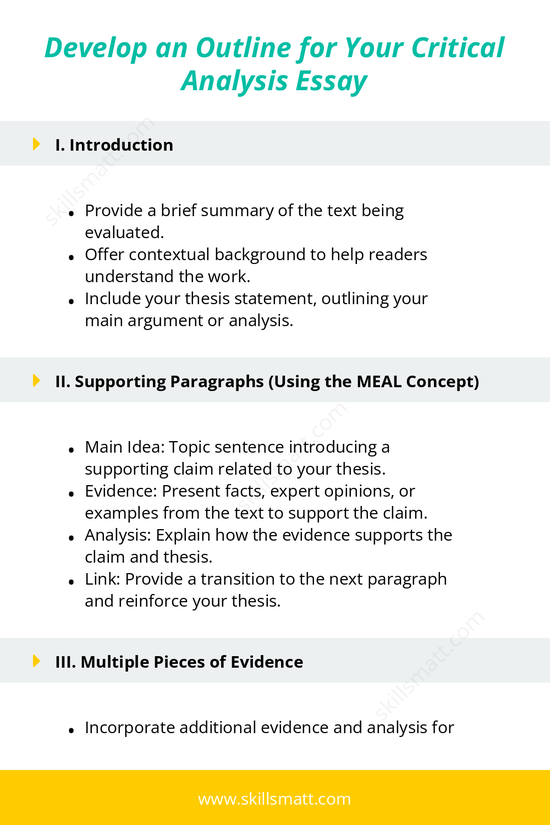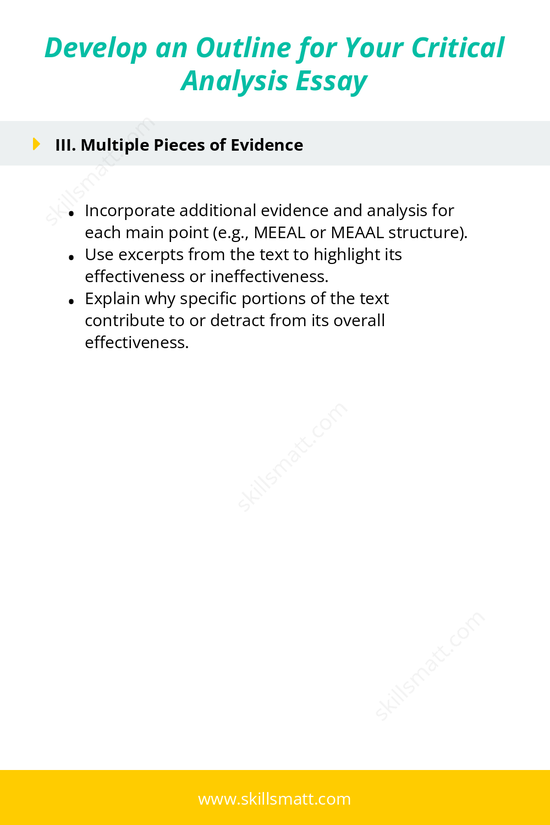Develop an Outline for Your Critical Analysis Essay
I. Introduction
- Provide a brief summary of the text being evaluated: Begin by summarizing the work you are analyzing. Be concise, highlighting the most important elements of the work that will inform your argument or analysis.
- Offer contextual background to help readers understand the work: Offer any necessary background information about the text, such as the author’s intent, the historical context, or the cultural significance of the work.
- Include your thesis statement, outlining your main argument or analysis: End the introduction with a clear and focused thesis statement that previews the main points you will discuss in your essay. This sets the direction for the body paragraphs.
II. Supporting Paragraphs (Using the MEAL Concept)
- Main Idea: Start each paragraph with a topic sentence that introduces a supporting claim or argument related to your thesis. Make sure the main idea is clear and contributes to your overall analysis.
- Evidence: Present evidence from the text, such as quotes or examples, to support your claims. Be sure to choose the most relevant evidence to strengthen your argument.
- Analysis: Explain how the evidence you’ve presented supports your claim and thesis. This is the critical part of the analysis—break down the evidence to show its significance and relevance.
- Link: Provide a transition that connects this paragraph to the next. Ensure your argument flows logically and that each paragraph reinforces your thesis.
III. Multiple Pieces of Evidence
- Incorporate additional evidence and analysis for each main point (e.g., MEEAL or MEAAL structure): When developing each argument, include multiple pieces of evidence for a well-rounded analysis. Use examples from the work to demonstrate various aspects of your argument.
- Use excerpts from the text to highlight its effectiveness or ineffectiveness: Select excerpts that showcase the strengths or weaknesses of the work, depending on your analysis. Be sure to explain the importance of each quote or example.
- Explain why specific portions of the text contribute to or detract from its overall effectiveness: Provide a deeper analysis of how each piece of evidence either supports or undermines the work's success in achieving its goals.


